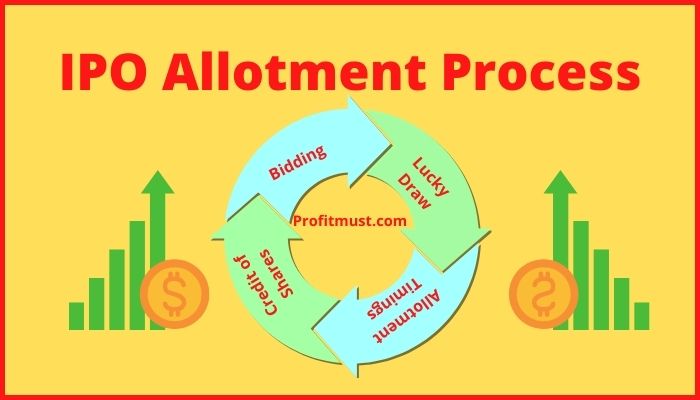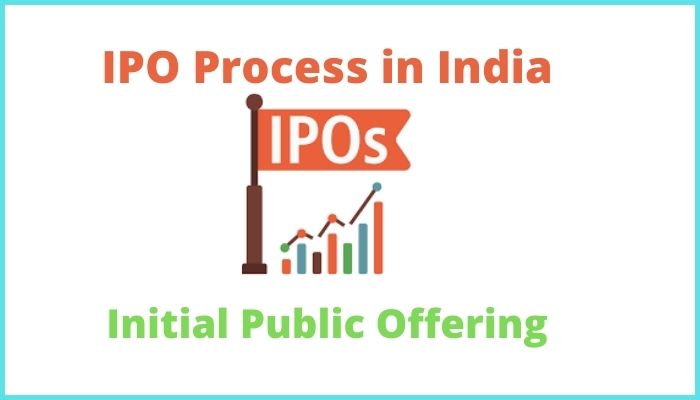It is critical to understand the IPO process in India. India is host to two of the globe’s largest stock exchanges. The NSE just gained headlines when it became the world’s top derivatives exchange by volume.
On the other hand, the BSE has traditionally earned the dubious distinction of having the most number of public firms as more Indian companies issue initial public offerings (IPOs). Let’s talk about the process of IPO.
Table of Contents
IPO Process in India
The initial public offering process is lengthy, and rightly so in India. After all, it is a significant occurrence for businesses, regulators, and investors. Executives and promoters of a company’s life shift as it becomes a public firm.
A publicly traded business must make daily reports to stock exchanges and authorities, as well as keep investors happy by releasing results on a regular basis.
Despite these time-consuming activities, a firm’s initial public offering (IPO) is a coveted milestone in its growth. In order to list a company via an IPO, there are seven steps to follow.
IPO Timeline
Here are major steps take place during the process of IPO:
1. Lead Manager
First step in the IPO process in India is recruitment of investment banks, which are market intermediaries that have been approved by regulators.
Investment banks are chosen based on a number of factors, including their business experience and credibility, distribution capabilities, and any previous association with the firm. Investment banks are tasked with determining the appropriate firm valuation and attracting buyers to purchase the IPO.
Investment banks are authorized to underwrite IPOs, either directly or through a third party for a fee, in order to ensure their excellence.
Review
Financial institutions inform their clients on the IPO after reviewing the firm ‘s accounting reports, market trends, and investor risk appetite.
When it comes to regular IPOs, no single investment bank wants to take on the entire risk, so they normally form a syndicate with other merchant banks. Lead manager refers to the bank that is leading the pack.
2. Proposal prospectus and process of SEBI
When all 3 entities (issuing firm, investment bank, and underwriter) have reached an agreement on the IPO’s broad parameters, they must prepare a draft prospectus and send it to Sebi.

The draft red herring prospectus (DRHP) is a document that contains detailed information regarding the firm ‘s past operations, future plans, and competitive landscape in its sector.
The draught prospectus also explains how the corporation intends to use the proceeds from the IPO.
Clarification
The Sebi’s role is to examine the company’s DRHP, and it can ask follow-up questions or require additional disclosures. When the regulator is pleased with the firm ‘s details it issues a “observation,” which is another way of describing that the IPO has been approved by the Sebi.
3. Road shows
Now that the issue has been resolved by the watchdog, firm executives and lead managers are traveling throughout the nation to market the IPO to potential investors, the majority of whom are institutional investors.
Qualified institutional investors (QIBs) typically hold 50% of shares in mainboard IPOs, making these participants vital to the IPO’s performance.
This road show process lasts at least a few weeks, and it can last longer if more investors are needed due to the issue’s size or appeal. Road shows in India can begin even before the IPO is authorized by the sebi.
Note:
It’s essential to note that this is a significant phase in the IPO process in India because the book-building method we use in IPOs maintains that everyone gets the same price .
This is in stark contrast to the Dutch auction scheme adopted by Google for its IPO in 2004, which essentially bypassed investment banks and road shows. The Dutch auction scheme favors the highest bidders, and shares are distributed at a variety of prices.
4. Red herring prospectus and Pricing
The corporation is not expected to reveal how the issue will be priced or when it will be released when it files a draft prospectus. The firm files a revised version of the prospectus until the issue has received regulatory approval and the organization is ready to release the IPO.
Red herring prospectus is the name given to this edition (RHP). An RHP includes financial data that has been revised and also the IPO dates. This paper, nevertheless, is devoid of issue pricing.
The price band for an initial public offering (IPO), the discount for institutional investors and staff, and the minimum bid lot size are all determined a few days before the IPO.
5. Bidding through book-building
The IPO is made accessible to investors for bidding after pricing is finalized. It is normally a price band for mainboard IPOs, although it is a set price band for smaller issues.
IPOs are usually held open for at least three working days, with the possibility of an extension in the event of under subscription. An initial public offering (IPO) can be held open for a period of 10 days.

In India, the IPO bidding system allows for both online and offline applications for public offerings. Nonetheless, SEBI is working to reduce the number of offline applications.
Simultaneously, online services such as UPI and ASBA applications are gaining popularity.
6. Allotment
Following the completion of IPO bidding, allotment is the next essential stage, and the issue registrar is in charge of this process. Even in the event of a good IPO, there are a variety of options and, as a result, the number of shares allocated can vary.
More on the reasoning behind IPO allotment can be found here. Since stock trading in India is required to be done in demat form, the registrar must ensure that shares are credited to the effective applicants’ respective demat accounts.

7. Listing and lock-in time period
Last but not the least in the IPO process in India is the IPO phase culminates in the company being listed on a stock exchange. Qualified applicants can sell their shares on stock exchanges and new buyers can buy them after the secondary market listing.
Some shareholders, like anchor investors and promoters, are subject to lock-in periods, which prevent them from selling their shares right after they are listed.
Lock-in Period
A 30-day lock-in term applies to anchor investors from the date of allotment. Promoters are subject to a more strict lock-in.
As per SEBI regulations, promoters are obligated to hold 20% of the firm’s completely diluted post-offer equity share capital for a duration of three years from the date of allotment.
The IPO carnival takes months to complete. It necessitates a charm offensive, ad blitzes, extensive paperwork, intractable challenges, never-ending number crunching, and unending legwork on the part of the corporation.
Conclusion
These are major steps which take place in all the IPOs in India. However, an investor must remain careful before applying for an IPO.
This is all from our side regarding the process of IPO. Let us know your views about ipo process steps in india in the comment section. If you don’t have a Demat account, open it now with Zerodha best trading app.
Other Interesting blogs related to IPO in India Process
Difference Between IPO and FPO
FAQ About IPO Process Steps
What is IPO?
IPO is Initial Public offering. This is a process for a company to become public from Private company.
Is IPO process in India is Difficult?
No, it is not so Difficult. However, companies need to follow the guidelines properly which are issued by Sebi.
Which Regulator approves IPO of any company in India?
Securities and Exchange Board of India is the regulator which approves IPO in India.
Is lead manager mandatory for IPO process in India?
Yes, as they are the ones who will get IPO approval from SEBI and maintain the whole process of IPO for any firm.
Is their any lock in Period for retail investor in IPO?
No, there is no lock in period for retail investor in IPO.


Visitor Rating: 5 Stars